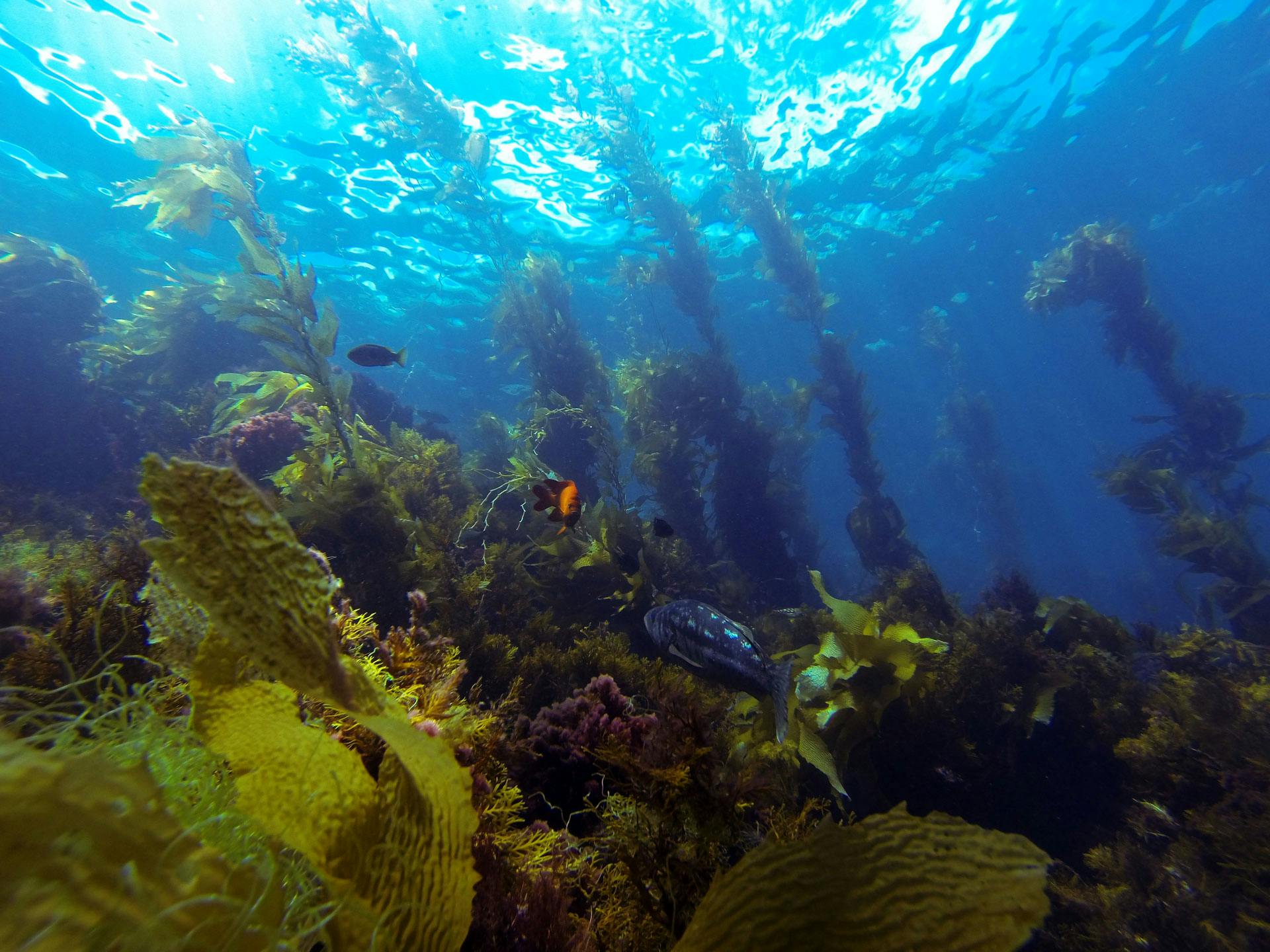Working to Protect the Shorelines Using Kelp Forest Restoration Techniques
Frequent storms and larger waves pounding the Southern California coastline are major causes for concern if we hope to preserve our beaches and rocky shorelines for future generations to enjoy. The Bay Foundation (TBF) spearheaded a study to investigate how we can protect our shorelines using kelp forest restoration techniques.
A variety of tools are used to measure physical, chemical, and biological responses to the presence of kelp in our study sites.
- Acoustic Doppler Current Profilers (ADCPs): These instruments measure changes in current flow using the “Doppler effect” which uses sound waves scattered back from particles within the water column to measure water movement around the instrument.
- Pressure Sensors: These instruments measure wave and tide data by sensing pressure differences in the water. As a surface wave passes over a subsurface pressure sensor, the elevation and depression of the sea surface cause a pressure disturbance that is then measured by the sensor.
- Temperature Loggers: These instruments take timed measurements of the water temperature surrounding the instrument. When placed in varying depths, this data can help us understand stratification and mixing throughout the water column.
- Niskin Bottles: Specialized containers that allow researchers to take water samples at predetermined depths in the water column to analyze chemical components of the sea water, such as dissolved oxygen and pH.
- Biological Monitoring: SCUBA-based underwater surveys will quantify the growth of kelp over time, and the presence of invertebrates and fish in response to the increase in kelp density.
The Kelp Forest Hydrodynamics Study, led by Dr. Kristen Elsmore and Dr. Brian Gaylord of University of California, Davis, and Dr. Kerry J. Nickols of California State University Northridge, helped to inform how kelp forests influence current patterns, wave velocity, and sediment transport off the coast of the Palos Verdes Peninsula. Water chemistry studies were done in conjunction with University of California, Los Angeles, Institute of Environment and Sustainability.
Project Highlights
